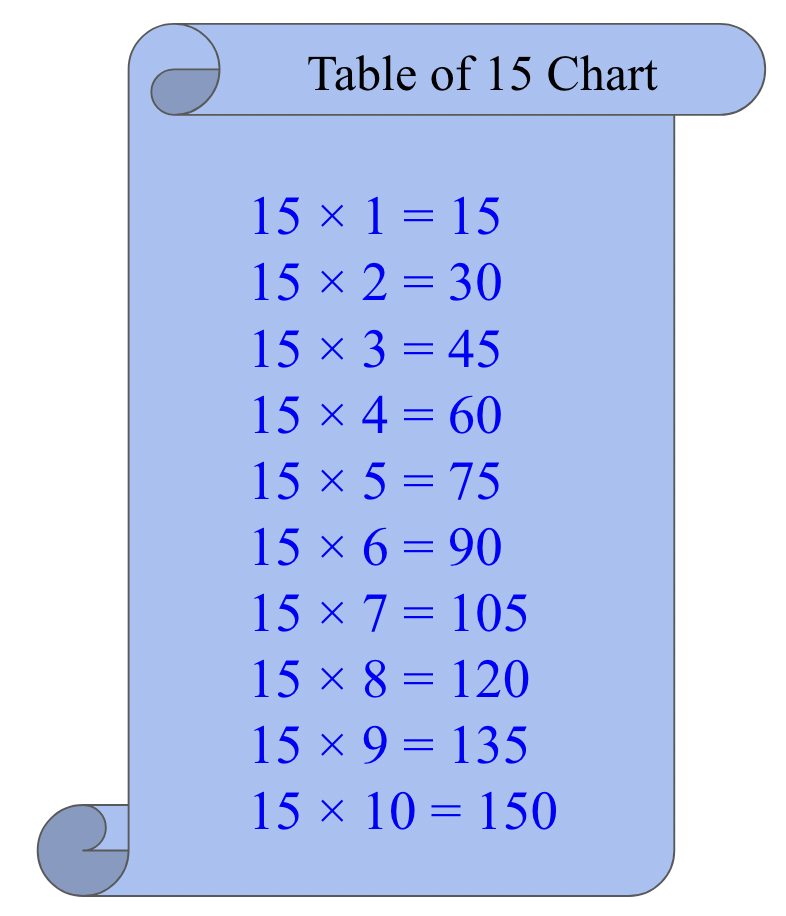The table of 15 helps in identifying multiples of 15. Each number in the table is a multiple of 15. For instance, we can see that 90 is a multiple of 15 because it appears in the table of 15 (or 15 times table) as 15 x 6 = 90 (15 times 6 is 90).
Learn: Multiplication Tables

Multiplication Table of 15
| 15 | × | 1 | = | 15 |
| 15 | × | 2 | = | 30 |
| 15 | × | 3 | = | 45 |
| 15 | × | 4 | = | 60 |
| 15 | × | 5 | = | 75 |
| 15 | × | 6 | = | 90 |
| 15 | × | 7 | = | 105 |
| 15 | × | 8 | = | 120 |
| 15 | × | 9 | = | 135 |
| 15 | × | 10 | = | 150 |
| 15 | × | 11 | = | 165 |
| 15 | × | 12 | = | 180 |
| 15 | × | 13 | = | 195 |
| 15 | × | 14 | = | 210 |
| 15 | × | 15 | = | 225 |
| 15 | × | 16 | = | 240 |
| 15 | × | 17 | = | 255 |
| 15 | × | 18 | = | 270 |
| 15 | × | 19 | = | 285 |
| 15 | × | 20 | = | 300 |
Simple Trick to Memorize the 15 Times Table
| Multiplication of 15 | Write 5 and 0 in sequence at the unit’s place | Shortcut 1: Two consecutive odd and even numbers in the sequence should be written as mentioned below | Shortcut 2: Another trick for remaining digits in the product (other than unit digit): | ||
| Write the multiples of 3 alternatively starting from the second result/product | Perform skip counting by 3 starting from 1 | Final result | |||
| 15 × 1 | _ 5 | 15 | 15 | 15 | |
| 15 × 2 | _ 0 | 30 | 30 | 30 | |
| 15 × 3 | _ 5 | 45 | 45 | 45 | |
| 15 × 4 | _ 0 | 60 | 60 | 60 | |
| 15 × 5 | _ 5 | 75 | 75 | 75 | |
| 15 × 6 | _ 0 | 90 | 90 | 90 | |
| 15 × 7 | _ 5 | 105 | 105 | 105 | |
| 15 × 8 | _ 0 | 120 | 120 | 120 | |
| 15 × 9 | _ 5 | 135 | 135 | 135 | |
| 15 × 10 | _ 0 | 150 | 150 | 150 | |
Also, read: